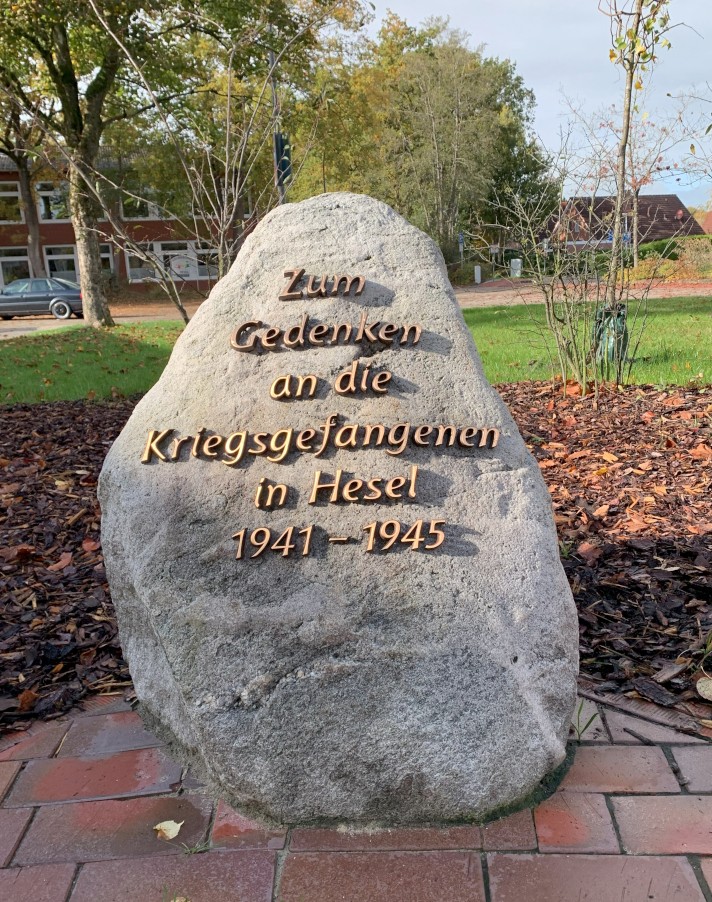On May 4, 2025, a memorial site was inaugurated in the village of Hesel in Lower Saxony to commemorate the prisoner of war camp “Labor detachment 5551” (German: Arbeitskommando 5551). A memorial stone and plaque now serve as a permanent reminder of the approximately 100 prisoners of war who were imprisoned in Hesel from 1941 until the end of the war in 1945 and were forced to perform forced labor.
The camp was located in close proximity to the church and school at the corner of Rüschenweg/Stikelkamper Straße. Initially, French, Polish, and Serbian prisoners were held here; from 1943 onwards, the inmates were exclusively Serbian prisoners of war. It was presumably the second-largest Serbian POW camp in East Frisia after Emden. The prisoners lived in two barracks on grounds surrounded by barbed wire and they were primarily forced to work in agriculture in Hesel, Holtland, and the surrounding communities.
As a consequence of the German war of aggression throughout Europe, these men were torn from their families in Serbia and deported to Germany. Many of them were unable to return to their homeland after the war due to the ongoing chaos and the division of the world between East and West during the Cold War. Some of them remained in Hesel: four Serbs married women from Hesel and Holtland, started families, and were integrated into the village communities.
Almost 80 years after the end of the war, an initiative was founded to permanently commemorate Arbeitskommando 5551. The former camp grounds are now owned by the Samtgemeinde Hesel, which approved the erection of the memorial. A working group led by mayor Gerd Dählmann researched the history of the camp and produced comprehensive documentation.
Mayor Dählmann emphasizes the significance of the memorial site: "Especially in times when war is being waged again in Europe after long decades of peace, it is our responsibility not to let the past fall into oblivion." The memorial site sends a clear message against forgetting – for peace and for future generations.
Intersection of Rüschenweg and Stikelkamper Straße (swimming pool car park)
suhr@ostfriesischelandschaft.de; phone number: 0049 4941 179942
